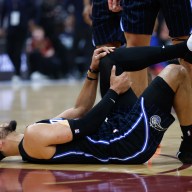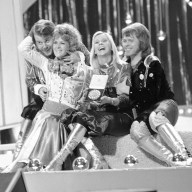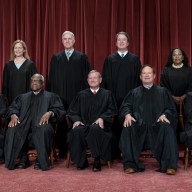TORONTO – It was a moment from his own personal rock ‘n’ roll history Randy Bachman will never forget: playing the classic riff from “Takin’ Care of Business” onstage with the legendary inventor of the solid-body electric guitar.
Les Paul, whose namesake design cut an iconic profile that’s become part of the very fabric of rock history, died Thursday at age 94.
The music pioneer, who also invented the revolutionary multitrack recorder, left an immeasurable impact on pop music, said Bachman.
“I would say he’s probably, and I don’t think anyone would argue with me, he’s probably the biggest influence on rock ‘n’ roll guitar, rock ‘n’ roll music, and pop music,” Bachman told The Canadian Press in an interview from his Montreal hotel room.
“It’s very sad to lose a giant like him, who was a genius. He changed the world with his music and his inventions. Recorded music and guitar would not be the same.”
Bachman was a teenager when he first saw Paul perform at Rancho Don Carlos, a supper club in Winnipeg, in 1959. Paul was performing with his wife, Mary Ford, with whom he earned 36 gold records.
Bachman bought a ticket but was too young to get inside the nightclub. So he met Paul outside and helped him load in his gear, which included eight tape recorders that Paul would plant around the venue and control with a remote attached to his guitar.
When the show started, Bachman was forced to stand in the kitchen and peer through the circular windows on the swinging doors that led into the bar.
“Then (Paul) came into the kitchen to wipe off his head and he said: ‘Here kid, hold this,’ and he gave me his guitar,” Bachman recalled.
A stunned Bachman stood there in awe, holding a “very heavy” white Les Paul guitar for a minute, before Paul grabbed it back and returned to the stage to perform.
After the show, Bachman – then only a budding guitarist – eagerly volunteered to help pack up the musical gear and asked Paul if he could teach him a guitar lick.
Paul was game, and patiently showed him how to play his hit, “How High the Moon.”
Bachman met Paul again in 1987 in Long Island, where Bachman Turner Overdrive was opening for Van Halen.
Paul greeted him enthusiastically, saying: “Hi kid!”
When Bachman asked if Paul remembered him, almost 30 years later, the guitar legend replied: “Of course, you helped me unload my car!”
But it was a 2001 meeting that was a particular pleasure for Bachman, when he went to see Paul perform at a club in New York. Paul called him onstage, where they played “How High the Moon” together, and then Bachman’s own hit, “Takin’ Care of Business.”
Paul invited Bachman to visit his home in Mahwah, N.J., the next day to see some more of his inventions and guitars, but it wasn’t to be – the following morning was Sept. 11, 2001.
“Everything exploded, I was stuck in New York, he was stuck in New Jersey, and I never got to his place to see him, so that saddens me greatly,” Bachman said. “It was like heartbreak.
“But that is my cherished memory of Les Paul.”
Bachman, a guitar aficionado who until recently owned well over 500 guitars, says he still has four Les Paul guitars. He wrote “American Woman” on a ’59 Les Paul that now sits in the Rock and Roll Hall of Fame and Museum in Cleveland.
Now, he keeps the four Les Paul guitars in his rotation – two “Goldtops” and two ’59 models. He always keeps at least two with him when he tours.
“I always have to have a backup,” Bachman said.
Bachman lauds the guitar’s distinctive tone, its “darkish kind of sound” and wonderful sustain.
Toronto singer/songwriter Hawksley Workman said he spent his formative years hoping he would one day get his hands on a Les Paul guitar. It finally happened about a decade ago, when he was 24.
“If you were like me … you laid awake at night dreaming of the day you’d be able to afford a Les Paul,” Workman said. “I’m very passionate about my two Les Pauls that have been with me for a very, very long time.
“To me, they’re kind of a part of my character, my personality as a player.”
Workman, who has produced albums for Great Big Sea, Sarah Slean, and Tegan and Sara, also said Paul’s innovations in recording were revolutionary.
With the advent of multitrack recording, musicians were no longer bound by what they could produce live off the floor, and records could then be built as “a piece of cinema instead of snapshots of a recorded moment,” Workman said.
“An art form was actually created when multitrack recording was invented,” he said.
“Instead of capturing moments, you were manufacturing moments. It was no longer a situation where you were in Sun Studios and setting up a band and that was how the rest of the world heard it.
“You were creating a cinematic aural experience.”
















